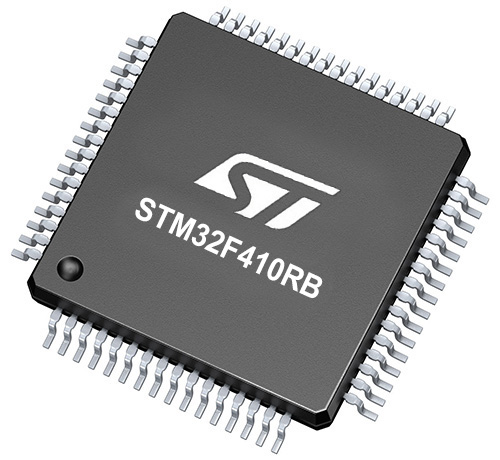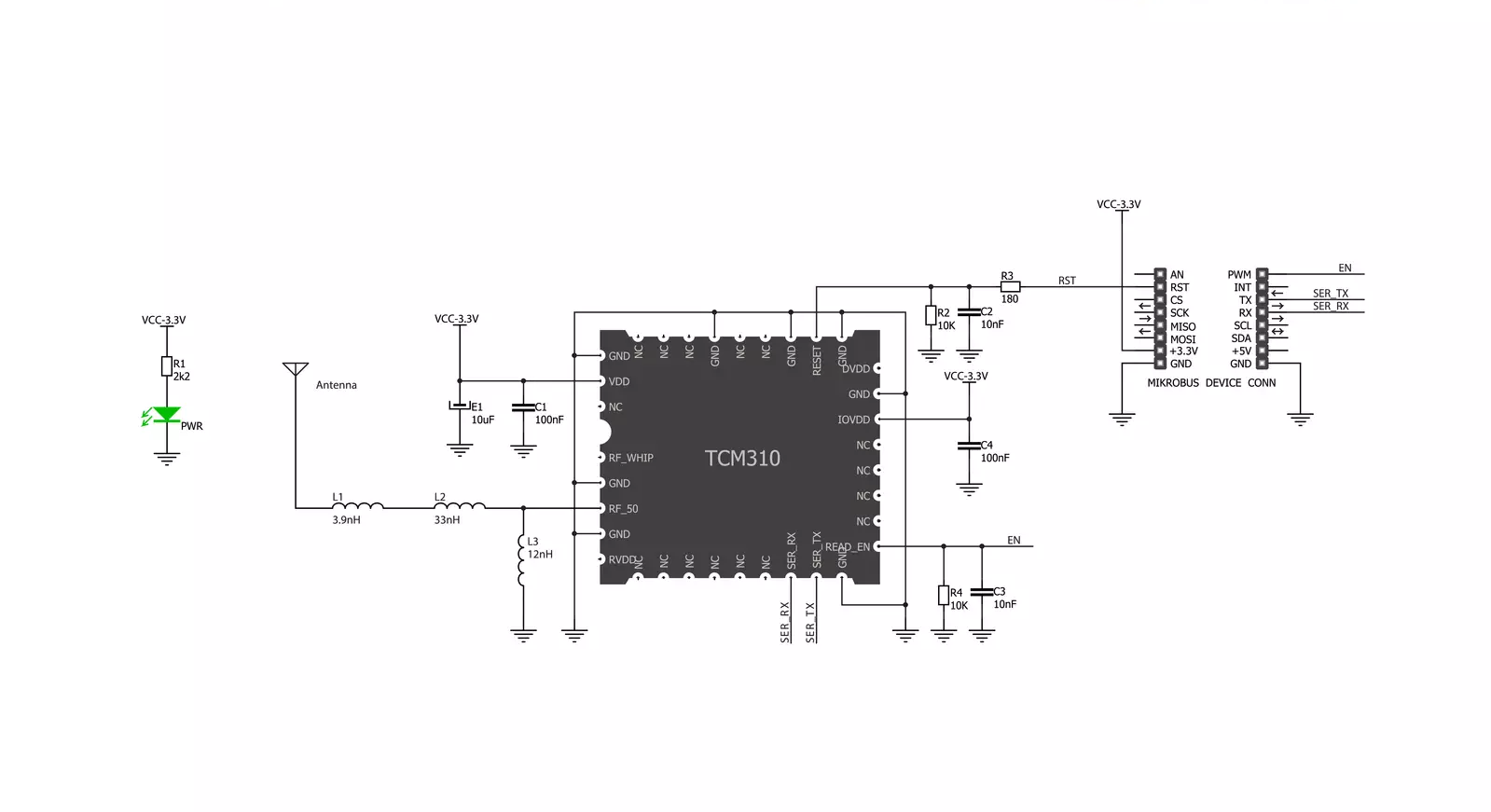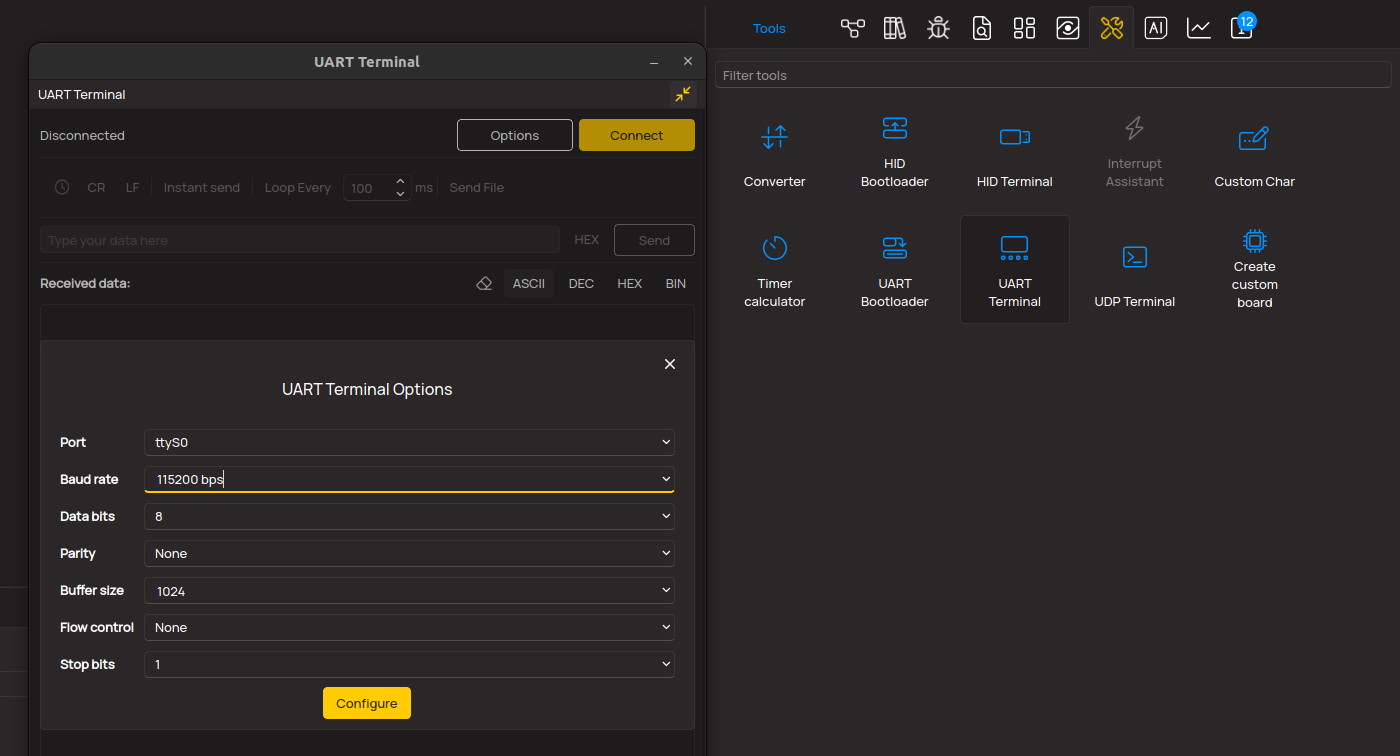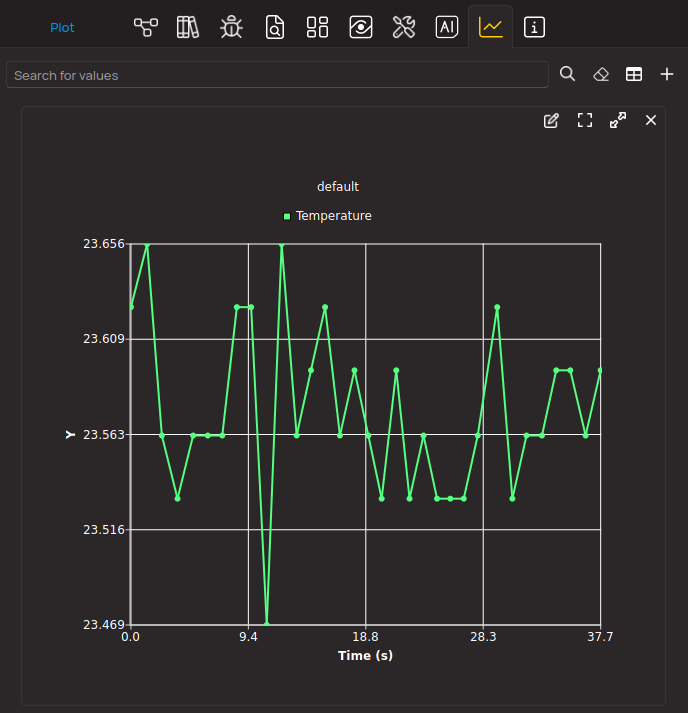Our energy harvesting solution offers a green and sustainable power solution by extracting energy from the environment, including motion, light, and temperature differences, allowing for reliable and continuous wireless signal transmission anytime and anywhere
A
A
Hardware Overview
How does it work?
EnOcean Click is based on the TCM310, a bidirectional transceiver gateway module from EnOcean. It enables the realization of gateways for the EnOcean 868MHz radio systems by providing a bidirectional radio interface at the one end and a serial interface at the other end, with an ASK modulation type and data rate of 125Kbps. The module has low current consumption for receiving and transmitting modes with a receiving sensitivity of -96dBm over the onboard 868MHz chip antenna. It generates its electrical energy by
converting electromagnetic, solar, and thermoelectric energy to work as a battery-free self-powered device. The TCM310 module can act as a postmaster for up to 15 bidirectional sensors using Smart Ack technology. The EnOcean module uses the UART interface with commonly used UART RX and TX pins as its default communication protocol for communication with the host microcontroller. In addition, this Click board™ also features read and operating modes, which can be activated using the EN pin of the
mikroBUS™ socket. The operating mode is set by default with a pull-down resistor. The reset pin routed on the RST pin of the mikroBUS™ socket provides the general module-reset ability. This Click board™ can be operated only with a 3.3V logic voltage level. The board must perform appropriate logic voltage level conversion before using MCUs with different logic levels. Also, it comes equipped with a library containing functions and an example code that can be used as a reference for further development.
Features overview
Development board
Nucleo-64 with STM32F410RB MCU offers a cost-effective and adaptable platform for developers to explore new ideas and prototype their designs. This board harnesses the versatility of the STM32 microcontroller, enabling users to select the optimal balance of performance and power consumption for their projects. It accommodates the STM32 microcontroller in the LQFP64 package and includes essential components such as a user LED, which doubles as an ARDUINO® signal, alongside user and reset push-buttons, and a 32.768kHz crystal oscillator for precise timing operations. Designed with expansion and flexibility in mind, the Nucleo-64 board features an ARDUINO® Uno V3 expansion connector and ST morpho extension pin
headers, granting complete access to the STM32's I/Os for comprehensive project integration. Power supply options are adaptable, supporting ST-LINK USB VBUS or external power sources, ensuring adaptability in various development environments. The board also has an on-board ST-LINK debugger/programmer with USB re-enumeration capability, simplifying the programming and debugging process. Moreover, the board is designed to simplify advanced development with its external SMPS for efficient Vcore logic supply, support for USB Device full speed or USB SNK/UFP full speed, and built-in cryptographic features, enhancing both the power efficiency and security of projects. Additional connectivity is
provided through dedicated connectors for external SMPS experimentation, a USB connector for the ST-LINK, and a MIPI® debug connector, expanding the possibilities for hardware interfacing and experimentation. Developers will find extensive support through comprehensive free software libraries and examples, courtesy of the STM32Cube MCU Package. This, combined with compatibility with a wide array of Integrated Development Environments (IDEs), including IAR Embedded Workbench®, MDK-ARM, and STM32CubeIDE, ensures a smooth and efficient development experience, allowing users to fully leverage the capabilities of the Nucleo-64 board in their projects.
Microcontroller Overview
MCU Card / MCU

Architecture
ARM Cortex-M4
MCU Memory (KB)
128
Silicon Vendor
STMicroelectronics
Pin count
64
RAM (Bytes)
32768
You complete me!
Accessories
Click Shield for Nucleo-64 comes equipped with two proprietary mikroBUS™ sockets, allowing all the Click board™ devices to be interfaced with the STM32 Nucleo-64 board with no effort. This way, Mikroe allows its users to add any functionality from our ever-growing range of Click boards™, such as WiFi, GSM, GPS, Bluetooth, ZigBee, environmental sensors, LEDs, speech recognition, motor control, movement sensors, and many more. More than 1537 Click boards™, which can be stacked and integrated, are at your disposal. The STM32 Nucleo-64 boards are based on the microcontrollers in 64-pin packages, a 32-bit MCU with an ARM Cortex M4 processor operating at 84MHz, 512Kb Flash, and 96KB SRAM, divided into two regions where the top section represents the ST-Link/V2 debugger and programmer while the bottom section of the board is an actual development board. These boards are controlled and powered conveniently through a USB connection to program and efficiently debug the Nucleo-64 board out of the box, with an additional USB cable connected to the USB mini port on the board. Most of the STM32 microcontroller pins are brought to the IO pins on the left and right edge of the board, which are then connected to two existing mikroBUS™ sockets. This Click Shield also has several switches that perform functions such as selecting the logic levels of analog signals on mikroBUS™ sockets and selecting logic voltage levels of the mikroBUS™ sockets themselves. Besides, the user is offered the possibility of using any Click board™ with the help of existing bidirectional level-shifting voltage translators, regardless of whether the Click board™ operates at a 3.3V or 5V logic voltage level. Once you connect the STM32 Nucleo-64 board with our Click Shield for Nucleo-64, you can access hundreds of Click boards™, working with 3.3V or 5V logic voltage levels.
Used MCU Pins
mikroBUS™ mapper
Take a closer look
Click board™ Schematic

Step by step
Project assembly
Track your results in real time
Application Output
1. Application Output - In Debug mode, the 'Application Output' window enables real-time data monitoring, offering direct insight into execution results. Ensure proper data display by configuring the environment correctly using the provided tutorial.

2. UART Terminal - Use the UART Terminal to monitor data transmission via a USB to UART converter, allowing direct communication between the Click board™ and your development system. Configure the baud rate and other serial settings according to your project's requirements to ensure proper functionality. For step-by-step setup instructions, refer to the provided tutorial.

3. Plot Output - The Plot feature offers a powerful way to visualize real-time sensor data, enabling trend analysis, debugging, and comparison of multiple data points. To set it up correctly, follow the provided tutorial, which includes a step-by-step example of using the Plot feature to display Click board™ readings. To use the Plot feature in your code, use the function: plot(*insert_graph_name*, variable_name);. This is a general format, and it is up to the user to replace 'insert_graph_name' with the actual graph name and 'variable_name' with the parameter to be displayed.

Software Support
Library Description
This library contains API for EnOcean Click driver.
Key functions:
enocean_response_ready- Response Ready function.enocean_uart_isr- UART Interrupt Routine function.enocean_send_packet- Packet Send function.
Open Source
Code example
The complete application code and a ready-to-use project are available through the NECTO Studio Package Manager for direct installation in the NECTO Studio. The application code can also be found on the MIKROE GitHub account.
/*!
* \file
* \brief Enocean Click example
*
* # Description
* This example reads and processes data from EnOcean clicks.
*
* The demo application is composed of two sections :
*
* ## Application Init
* Initializes the driver and sets the driver handler.
*
* ## Application Task
* Reads the received data and parses it on the USB UART if the response buffer is ready.
*
* ## Additional Function
* - enocean_process - The general process of collecting data the module sends.
* - make_response - Driver handler function which stores data in the response buffer.
* - log_response - Logs the module response on the USB UART.
* - log_example - Logs button events on the USB UART.
* - check_response - Checks if the response is ready and logs button events.
*
* \author MikroE Team
*
*/
// ------------------------------------------------------------------- INCLUDES
#include "board.h"
#include "log.h"
#include "enocean.h"
#include "string.h"
// ------------------------------------------------------------------ VARIABLES
static enocean_t enocean;
static log_t logger;
enocean_packet_t response;
uint16_t response_size_cnt;
uint8_t rsp_check = 1;
// ------------------------------------------------------- ADDITIONAL FUNCTIONS
void make_response( enocean_packet_t *rsp, uint16_t *rsp_length_size )
{
uint16_t rsp_cnt;
for ( rsp_cnt = 0; rsp_cnt < rsp->data_length; rsp_cnt++ )
{
response.data_buff[ rsp_cnt ] = rsp->data_buff[ rsp_cnt ];
}
response.data_length = rsp->data_length;
response.opt_length = rsp->opt_length;
response.packet_type = rsp->packet_type;
response_size_cnt = *rsp_length_size;
}
void log_response( )
{
uint16_t rsp_cnt;
if ( rsp_check == 1 )
{
log_printf( &logger, "OPCODE + PARAM : ", rsp_check );
rsp_check = 0;
}
for ( rsp_cnt = 0; rsp_cnt < response.data_length; rsp_cnt++ )
{
log_printf( &logger, "0x%.2X ", ( uint16_t ) response.data_buff[ rsp_cnt ] );
}
if ( response_size_cnt == 1 )
{
log_printf( &logger, "\r\n" );
rsp_check = 1;
}
}
void log_example( )
{
switch ( response.data_buff[ 1 ] )
{
case 0x00:
{
log_printf( &logger, "* Button is released *\r\n" );
break;
}
case 0x10 :
{
log_printf( &logger, "* Button 1 is pressed *\r\n" );
break;
}
case 0x30 :
{
log_printf( &logger, "* Button 3 is pressed *\r\n" );
break;
}
case 0x50 :
{
log_printf( &logger, "* Button 5 is pressed *\r\n" );
break;
}
case 0x70 :
{
log_printf( &logger, "* Button 7 is pressed *\r\n" );
break;
}
case 0x15 :
{
log_printf( &logger, "* Buttons 1 and 5 are pressed *\r\n" );
break;
}
case 0x17 :
{
log_printf( &logger, "* Buttons 1 and 7 are pressed *\r\n" );
break;
}
case 0x35 :
{
log_printf( &logger, "* Buttons 3 and 5 are pressed *\r\n" );
break;
}
case 0x37 :
{
log_printf( &logger, "* Buttons 3 and 7 are pressed *\r\n" );
break;
}
default :
{
break;
}
}
}
void check_response( )
{
uint8_t response_ready;
response_ready = enocean_response_ready( &enocean );
if ( response_ready == ENOCEAN_RESPONSE_READY )
{
log_example( );
}
}
// ------------------------------------------------------ APPLICATION FUNCTIONS
void application_init ( void )
{
log_cfg_t log_cfg;
enocean_cfg_t cfg;
/**
* Logger initialization.
* Default baud rate: 115200
* Default log level: LOG_LEVEL_DEBUG
* @note If USB_UART_RX and USB_UART_TX
* are defined as HAL_PIN_NC, you will
* need to define them manually for log to work.
* See @b LOG_MAP_USB_UART macro definition for detailed explanation.
*/
LOG_MAP_USB_UART( log_cfg );
log_init( &logger, &log_cfg );
log_info( &logger, "---- Application Init ----" );
// Click initialization.
enocean_cfg_setup( &cfg );
ENOCEAN_MAP_MIKROBUS( cfg, MIKROBUS_1 );
enocean_init( &enocean, &cfg );
Delay_ms( 500 );
enocean_response_handler_set( &enocean, &make_response );
}
void application_task ( void )
{
enocean_uart_isr ( &enocean );
check_response ( );
Delay_1ms( );
}
void main ( void )
{
application_init( );
for ( ; ; )
{
application_task( );
}
}
// ------------------------------------------------------------------------ END

































